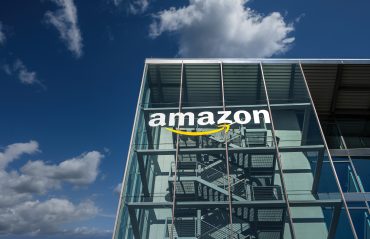
- AI Automation
- Corporate Restructuring
- Workforce
Amazon's Calculated Cull: The Logic Behind 14,000 Cuts
10 minute read

Amazon eliminates 14,000 corporate roles in a move explicitly tied to AI, signaling a structural shift from post-pandemic correction to long-term transformation.
Key Takeaways
-
14,000 corporate roles eliminated—4% of white-collar staff — Amazon links the cuts directly to generative AI integration, marking its first workforce reduction explicitly driven by automation rather than cost pressure.
-
AI spending exceeds $75 billion annually — Investments in Bedrock, Q, and Anthropic reallocate capital toward automation and infrastructure while AWS expands 19% year-over-year and advertising revenue climbs 17%.
-
Strategic shift, not crisis response — The restructuring raises productivity ratios, prioritizes individual contributors over managers, and signals confidence ahead of Q3 revenue between $174–179.5 billion.
Introduction
October 28, 2025—When Beth Galetti, Amazon’s senior vice president for People Experience and Technology, announced the elimination of roughly 14,000 corporate positions last week, the disclosure carried a clarity unusual in corporate restructuring. This was not austerity dressed in euphemism. Galetti linked the cuts—approximately 4% of Amazon’s 350,000 white-collar workforce—directly to generative AI’s capacity to reshape how work gets done. The timing, two days before third-quarter earnings expected to show sales between $174 billion and $179.5 billion, suggests confidence rather than distress.
The reduction differs in character from 2023’s 27,000-person drawdown. That earlier wave followed pandemic-era hiring excesses, when Amazon’s total workforce swelled to 1.62 million. The current action reflects something more deliberate: a structural realignment around artificial intelligence, one CEO Andy Jassy telegraphed in June when he wrote that generative AI “will fundamentally change many aspects of our work.” The implication was never subtle. Routine cognitive work would migrate to machines. Elite human talent would command greater leverage. Everything in between faced obsolescence.
The Mechanics of Contraction
Amazon’s transformation began with cultural recalibration. In September, Jassy mandated a 15% increase in the ratio of individual contributors to managers by the first quarter of 2026, deriding what he termed “pre-meetings for pre-meetings.” The five-day office return, effective this January, formalized expectations. Now comes the technological follow-through: Amazon Q handling customer service queries, Bedrock optimizing product listings, Nova-powered robots navigating fulfillment centers 10% faster through what the company calls DeepFleet.
Galetti’s memo identified the affected divisions—People Experience and Technology, Devices and Services, Operations—and outlined transition protocols. Most employees receive 90 days to pursue internal transfers. Severance packages exceed minimum obligations. The language emphasizes redirection: “We’re shifting resources to ensure we’re investing in our biggest bets.” Those bets center on Amazon Web Services, growing at 19% year-over-year, advertising rising 17%, and AI capital expenditure projected to exceed $75 billion annually.
The numbers support the narrative. Second-quarter net sales reached $167.7 billion, up 13% from the prior year. Operating margins expanded across segments—North America at 7.7%, AWS at 39.4%—contributing to $60 billion in trailing free cash flow. The stock, trading near $224 following the announcement, reflects investor confidence in a company demonstrating it can simultaneously invest in frontier technology and improve profitability. Headcount stabilized at 1.546 million as of June 30, but the composition has shifted markedly toward fulfillment and away from corporate functions where AI substitution proves most viable.
The Pattern Emerges
This reduction likely brings cumulative job eliminations since Jassy assumed the CEO role to roughly 40,000, the largest technology-sector restructuring since Intel’s 22,000 cuts earlier this year. Yet Amazon simultaneously plans to hire 250,000 seasonal workers for holiday warehouse operations, underscoring a bifurcation in labor strategy: automate the cognitive middle, expand the physical periphery, concentrate resources at the technological frontier.
The strategic coherence becomes visible in financial results. After the 2023 restructuring, AWS achieved an annual run rate exceeding $110 billion, with operating margins expanding from below 5% to above 10%. The efficiency gains funded deeper investments in large language models, including more than $4 billion committed to Anthropic, and the development of over 1,000 internal AI tools now deployed across the company’s operations.
For investors, the template is straightforward: operational discipline creates capacity for technological investment, which in turn generates competitive differentiation. Antitrust scrutiny from the European Union and the U.S. Department of Justice has not materially constrained Amazon’s strategic momentum, partly because the company maintains growth rates that suggest expanding markets rather than monopolistic stasis.
Implications Beyond Seattle
The broader ramifications extend into policy and practice. Seattle’s technology ecosystem, where Amazon remains the dominant employer, faces a hollowing of mid-tier corporate roles precisely as real estate prices reflect yesterday’s employment assumptions. Jassy’s framing of AI agents as “teammates” raises questions about whether displaced workers possess the skills for adjacent opportunities or require substantial retraining—and who bears that cost.
Policymakers confront the possibility that productivity gains from AI accrue primarily to capital while labor markets fragment. Proposals for AI-specific taxation or employer-funded transition programs gain traction when workforce reductions explicitly cite automation rather than demand fluctuations. The political economy of technological displacement, long theoretical, now presents in quarterly earnings calls and workforce adjustment notices.
For executives across industries, Amazon’s approach offers both permission and pressure. Satya Nadella at Microsoft and Sundar Pichai at Google have signaled similar priorities: AI investment demands organizational efficiency. Amazon, leveraging its origin story as a garage startup, can credibly claim it is rediscovering rather than abandoning its cultural DNA. Other companies lack that narrative convenience but face the same competitive dynamics.
The human cost, always present in restructuring, gains sharper relief when juxtaposed against $10 billion in share buybacks over the past year. Galetti emphasizes internal mobility as a priority, and the company’s track record on redeployment exceeds industry norms. Yet the mathematics remain unforgiving: efficiency improvements that eliminate thousands of roles while enriching shareholders test the social compact underpinning corporate legitimacy.
The Trajectory Ahead
Looking toward 2026, Amazon’s roadmap anticipates agent proliferation across its operations. The Quick Suite product aims to function as an AI colleague, compressing workflows from months to minutes. Rufus, the shopping assistant, continues evolving toward predictive recommendation. Seller-facing agents promise to anticipate inventory shortages before they materialize. Jassy’s framework presents a binary: accelerate or lose relevance.
For asset managers and long-term shareholders, the verdict appears increasingly settled. Amazon has demonstrated that scale need not imply sclerosis, that a company exceeding $2 trillion in market capitalization can rediscover operational agility. The 14,000 eliminated positions represent not panic but conviction—a judgment that the future requires fewer generalists and more specialists, fewer coordinators and more creators, less corporate apparatus and more technological capability.
Whether this model proves sustainable beyond quarterly earnings cycles remains uncertain. The productivity gains from AI may eventually broaden employment rather than concentrate it, create categories of work not yet imagined, distribute gains more equitably than current evidence suggests. For now, Amazon is executing a clear thesis: in AI’s emergence, organizations must choose between transformation and irrelevance. The company has chosen, and 14,000 corporate employees are absorbing the consequences.







